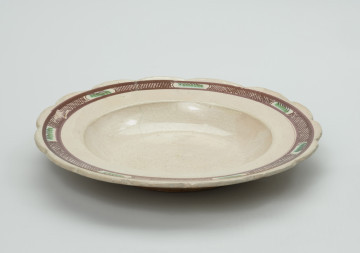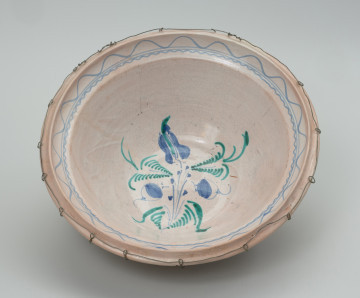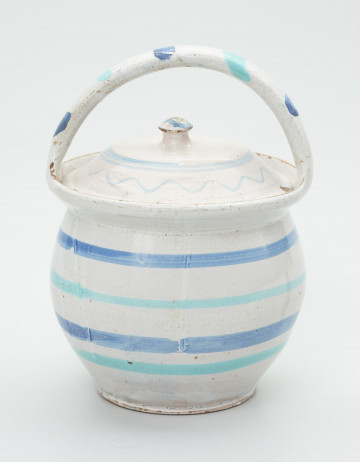
Plate
1791 — 1810
National Museum in Szczecin
Part of the collection: White ceramics from Szczecin
Two-fold vessels, also less commonly known as three-fold, are vessels consisting of two or three identical vessels joined together by bellies and spouts with a vertically or horizontally attached ear. They were used to store and carry food for people working away from home: in the field, in the forest, in a craft workshop or a manufactory. They were popular in many agricultural regions and were particularly useful in the functioning of a traditional rural household. The object in the Szczecin museum's collection is distinguished not by its form, which is typical of the two-fold vessels, but by the glaze used, coating its entire surface, both inside and out. The lead-tin mixture formula used gave a white tone after firing. This glaze, although popular and increasingly used by peasants in the second half of the 19th century, was still one of the more expensive glazes. Not every potter used them due to a lack of skill or the higher cost of raw materials, often increasing the final price of the vessel. Vessels glazed in this way were therefore relatively expensive, suggesting that they were used in wealthy households. Iwona Karwowska
Author / creator
Object type
conjoined pot
Technique
throwing (pottery technique), manual modelling, glazing, firing
Material
ceramic, lead-tin glaze
Origin / acquisition method
acquisition
Creation time / dating
Creation / finding place
Owner
Muzeum Narodowe w Szczecinie
Identification number
Location / status

1791 — 1810
National Museum in Szczecin

1801 — 1850
National Museum in Szczecin

1851 — 1900
National Museum in Szczecin
DISCOVER this TOPIC
Museum of King Jan III's Palace at Wilanów
DISCOVER this PATH
Educational path